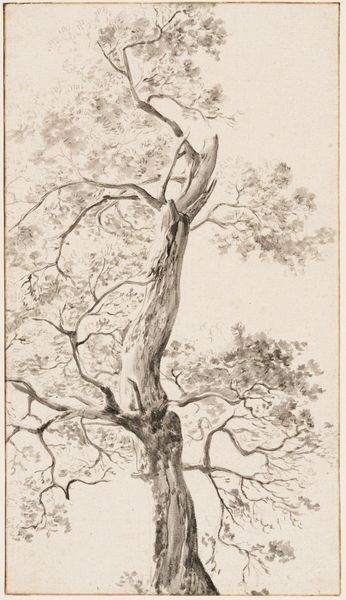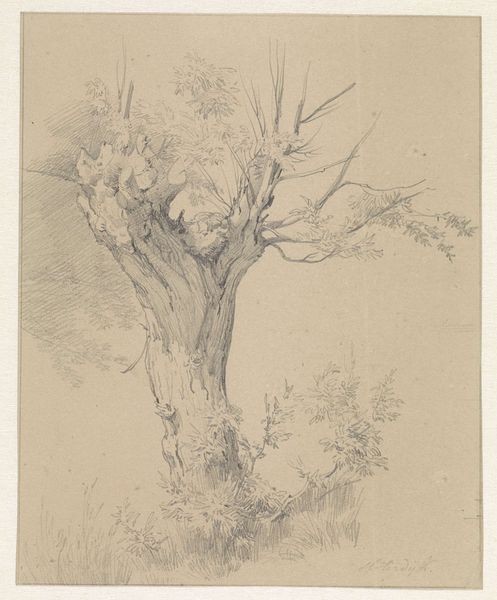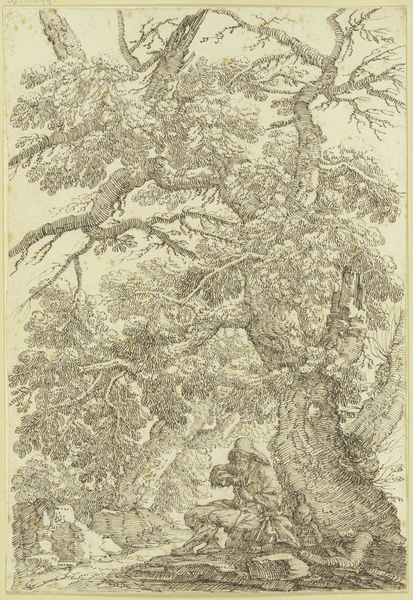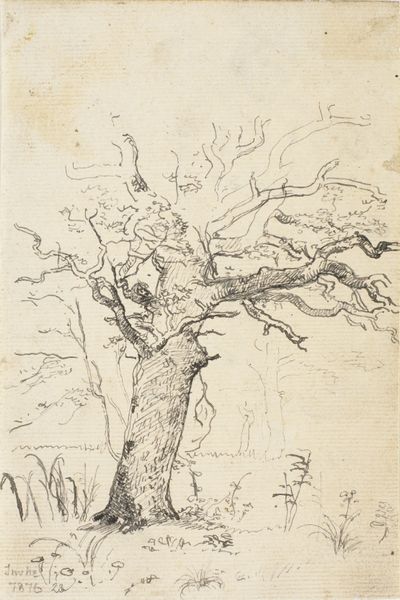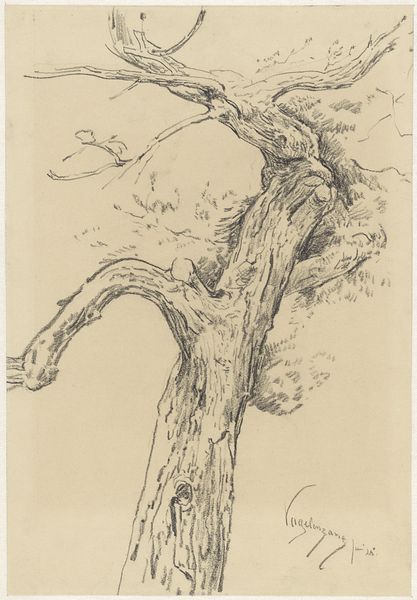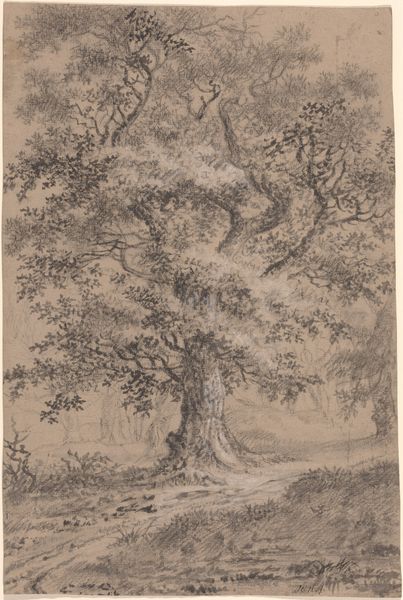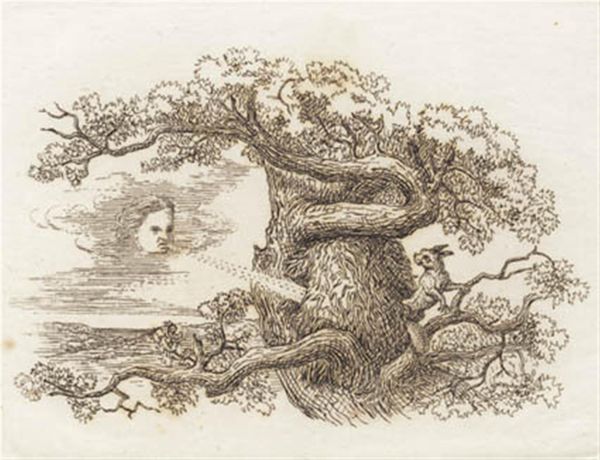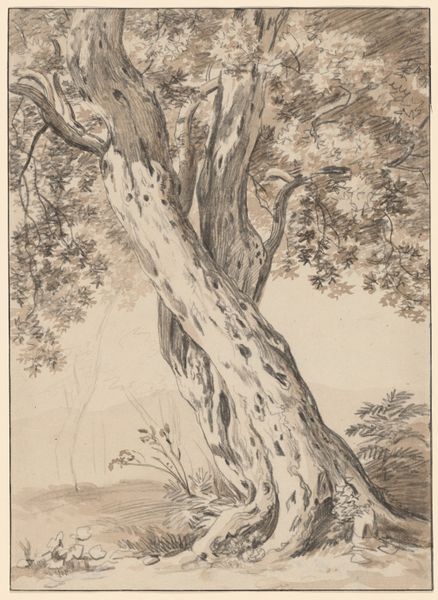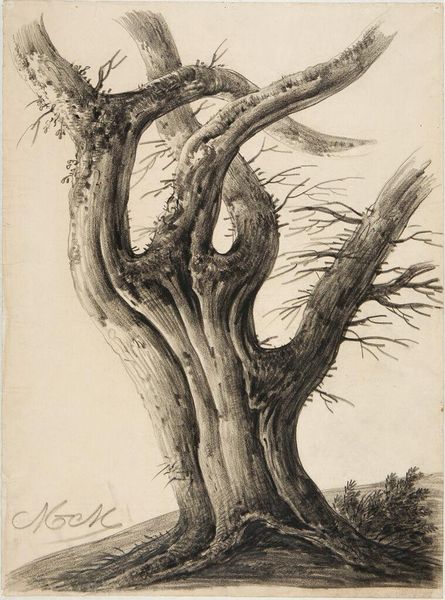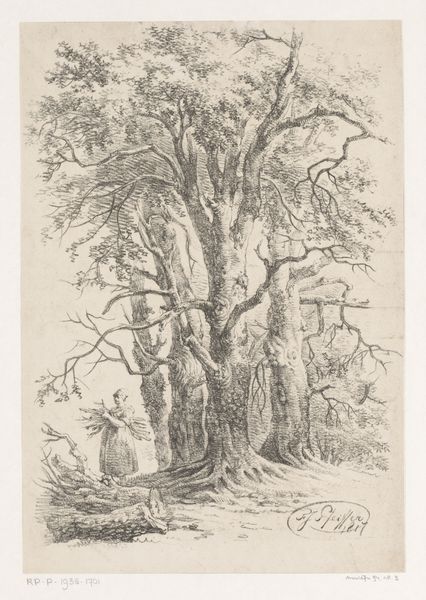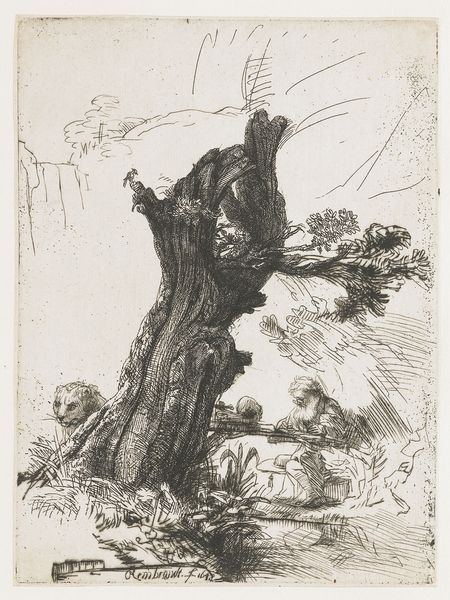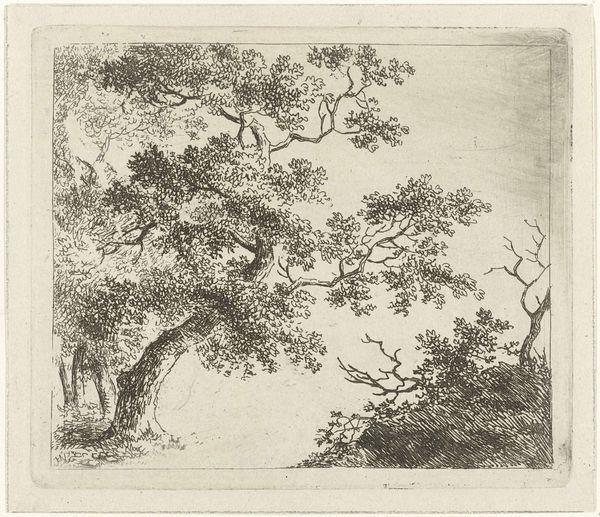
drawing, print, etching
#
drawing
# print
#
pen illustration
#
etching
#
landscape
#
line
#
realism
Dimensions: height 175 mm, width 92 mm
Copyright: Rijks Museum: Open Domain
Curator: What strikes me immediately about this image is the sense of resilience conveyed by this solitary tree. Its crooked form and the detail captured with etching, speak of endurance and defiance against the elements. Editor: That's a lovely interpretation. We're looking at "Kromme boomstam" by Johannes Pieter van Wisselingh, made sometime between 1830 and 1878. The medium is a combination of drawing, print, and etching, showcasing remarkable skill. The subject, of course, is the tree trunk itself. Curator: Yes, that skill really enhances the symbolism, doesn't it? Trees are so often representative of growth, family, strength – here, the bend speaks to an overcoming. How might this resonate with the history of the region or societal ideas during its creation? Is there a connection between the representation of a defiant natural form, and prevailing notions of social resilience at that time? Editor: That’s an insightful line of inquiry. The Romantics frequently employed the image of the natural world mirroring the human condition, and given its Dutch context, we might read this "bent" tree as an expression of cultural identity – survival in difficult conditions. The detail is exquisite. I see how the etcher uses different textures, mimicking the roughness of the bark. Curator: It does evoke feelings of perseverance against harsh environmental forces. Considering the cultural climate in the Netherlands during this time, did it function as an unspoken expression of defiance, or an inspiration to societal resilience? And what gender dynamics may have informed how individuals responded to symbols of natural strength and adaptation? Editor: That’s a question worthy of exploration, especially in a context that has so diligently fought to overcome the power of the sea. Thinking about symbolic traditions around nature might also help uncover a nuanced appreciation of such powerful, lonely, crooked trees. Curator: These explorations have offered an insightful and much-needed appreciation. The socio-historical aspects and how they correlate to expressions through art give the audience new means to better reflect and critique. Editor: And by examining these pieces for embedded symbolic content and potential links between the imagery and historical reality, hopefully the observer leaves here with more than just seeing another picture.
Comments
No comments
Be the first to comment and join the conversation on the ultimate creative platform.

